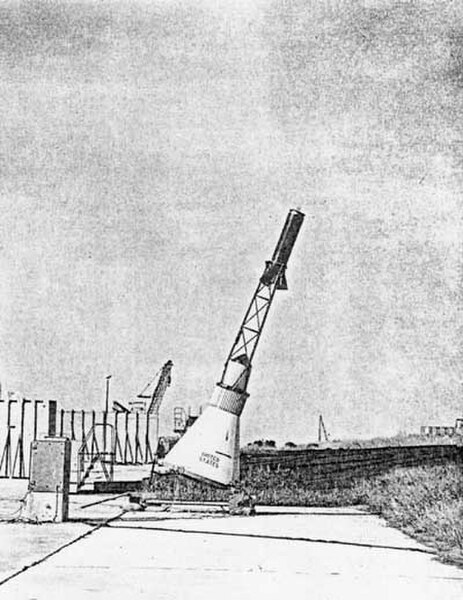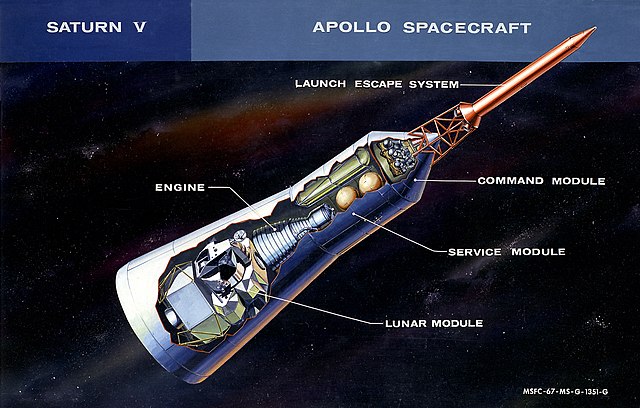Boilerplate (spaceflight)
A boilerplate spacecraft, also known as a mass simulator, is a nonfunctional craft or payload that is used to test various configurations and basic size, load, and handling characteristics of rocket launch vehicles. It is far less expensive to build multiple, full-scale, non-functional boilerplate spacecraft than it is to develop the full system. In this way, boilerplate spacecraft allow components and aspects of cutting-edge aerospace projects to be tested while detailed contracts for the final project are being negotiated. These tests may be used to develop procedures for mating a spacecraft to its launch vehicle, emergency access and egress, maintenance support activities, and various transportation processes.
Boilerplate version of Gemini spacecraft on display at Air Force Space and Missile Museum, Cape Canaveral, Florida, October 15, 2004
The prototype Space Shuttle orbiter Enterprise in full boilerplate stack configuration with External Tank and SRBs ready to undergo vibration testing at the Marshall Space Flight Center, October 4, 1978
Mercury Beach Abort test
Mercury parachute test
The Apollo spacecraft was composed of three parts designed to accomplish the American Apollo program's goal of landing astronauts on the Moon by the end of the 1960s and returning them safely to Earth. The expendable (single-use) spacecraft consisted of a combined command and service module (CSM) and an Apollo Lunar Module (LM). Two additional components complemented the spacecraft stack for space vehicle assembly: a spacecraft–LM adapter (SLA) designed to shield the LM from the aerodynamic stress of launch and to connect the CSM to the Saturn launch vehicle and a launch escape system (LES) to carry the crew in the command module safely away from the launch vehicle in the event of a launch emergency.
Complete Apollo spacecraft stack: launch escape system, command module, service module, Lunar Module, and spacecraft–LM adapter
The Apollo 17 CSM seen in lunar orbit from the ascent stage of the Lunar Module
Apollo Command Module and its position on top of Saturn V
Apollo Service Module








